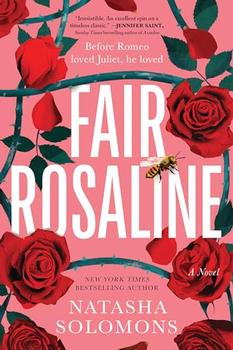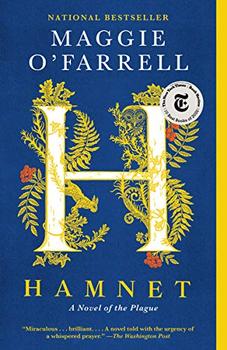Summary | Excerpt | Reading Guide | Reviews | Beyond the book | Read-Alikes | Genres & Themes | Author Bio

A Novel of Shakespeare's Dark Lady
by Sally O'ReillySally O'Reilly's novel features a protagonist modeled after real-life historical figure Aemilia Lanyer, an Elizabethan poet believed by some as the inspiration for the Dark Lady of William Shakespeare's sonnets. The collection of 154 sonnets, published in 1609, are generally thought to be autobiographical in nature. They contain three principal characters: the Fair Youth, the Rival Poet and the Dark Lady, who is the subject of twenty-five sonnets. Shakespeare describes a passionate but doomed love affair and has many harsh words and recriminations for his lover (for more about the Dark Lady, see 'Beyond the Book').
Aemilia narrates the story from her point of view, opening it by describing herself as "a witch for the modern age." It is a bold beginning and Aemilia is a bold protagonist — fiercely independent and clever in an age when women's roles were expected to be domestic or decorative and little more. Aemilia lives in seventeenth century London, is a member of the court of Queen Elizabeth I and the youthful mistress of the Queen's aging cousin, the Lord Chamberlain, Lord Hunsdon. Although the daughter of a court musician, Aemilia is brought up in the household of Lady Susan Bertie, who believes girls can learn as well as boys. Aemilia applies herself and grows into a free-thinking, ambitious woman able to converse in Greek with the Queen and form her own opinions. When she meets the up-and-coming playwright, William Shakespeare, Aemilia gives him her searing criticism of The Taming of the Shrew and, in particular, his poor treatment of the shrew, Kate.
Despite, or perhaps because of this unconventional beginning, she and Will begin a passionate love affair but their happiness is short-lived. A catastrophic misunderstanding and Aemilia's pregnancy result in her breaking with both Shakespeare and Lord Hunsdon and she submits to being married off to an irresponsible court musician, Alfonso Lanyer. To survive in a London ravaged by the plague and raise her son in a society that has little time for aspiring female poets, Aemilia finds herself tempted into the world of magic and the secrets offered by Dr Simon Forman, the astrologer and necromancer she first sought out to simply read her horoscope and tell her future.
In the novel's historical notes O'Reilly writes "I wanted to write about Shakespeare's London as if I was there. If a time machine had been available, I would have used it." In this she is wholly successful. Life in Aemilia's London is not pretty. Everyone suffers from "soot-wheeze, ale-runs, head-gripe, back-ache, lassitude and dread belly — not to mention sundry scabs, carbuncles and lesions of the skin." There are rats on Aemilia's kitchen table and naked babies flung into mass graves as the plague claims many victims. Sorcery, alchemy and the world of the "cunning-woman" — who walks a fine path between healer and witch — are all colorfully portrayed. Enjoyable as the descriptions are however, the observations of London life at times take away from the pace of an otherwise dramatic story. There are points where Aemilia's wanderings and reflections do less to advance the plot than they might.
Although Shakespeare is not the main character here, his time is superbly brought to life and his words cleverly woven into the novel. Will, believing Aemilia has been unfaithful to him, sends her a bundle of verses pouring out his scorn and disappointment. Here O'Reilly uses the actual lines that were subsequently published as sonnet 129. Although as yet unsuccessful, Aemilia is also a writer and, appropriately for a woman drawn to witchcraft, she writes a play that later becomes Shakespeare's Macbeth. Although recorded history shows no evidence that the real Aemilia Lanyer had any hand in writing Macbeth, as Bill Bryson points out in Shakespeare, the bard used many sources and lifted lines and verses from other people's work.
Another playful twist is the inclusion of Henry Wriothsley, 3rd Earl of Southampton who is believed by many to be the Fair Youth of Shakespeare's sonnets and the subject of much debate and research concerning Shakespeare's life and sexuality. O'Reilly uses the apparent triangle between the poet, the Fair Youth and the Dark Lady that we read of in the sonnets, as a key part of her plot. In doing so she has produced an excellent novel that can be enjoyed both in its own right and in the wider context of Shakespearean scholarship.
This is first and foremost a story of passion and witchcraft. It is also a fascinating exploration of the trials and tribulations of Elizabethan life from a woman's perspective. From start to finish, Dark Aemilia is beautifully written, ripe and vivid. It is historically astute — fictional certainly, but entertaining and credible, cleverly using the little that is known about Shakespeare to give Aemilia a dramatic, engaging life of her own.
![]() This review was originally published in The BookBrowse Review in July 2014, and has been updated for the
July 2015 edition.
Click here to go to this issue.
This review was originally published in The BookBrowse Review in July 2014, and has been updated for the
July 2015 edition.
Click here to go to this issue.

If you liked Dark Aemilia, try these:

by Natasha Solomons
Published 2024
The most exciting historical retelling of 2023: a subversive, powerful untelling of Romeo and Juliet by New York Times bestselling author Natasha Solomons.
Was the greatest ever love story a lie?

by Maggie O'Farrell
Published 2021
"Of all the stories that argue and speculate about Shakespeare's life … here is a novel … so gorgeously written that it transports you." —The Boston Globe




Flaming enthusiasm, backed up by horse sense and persistence, is the quality that most frequently makes for ...
Click Here to find out who said this, as well as discovering other famous literary quotes!
Your guide toexceptional books
BookBrowse seeks out and recommends the best in contemporary fiction and nonfiction—books that not only engage and entertain but also deepen our understanding of ourselves and the world around us.